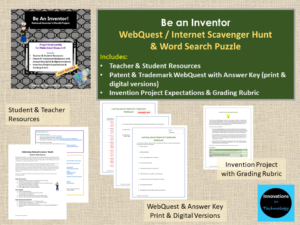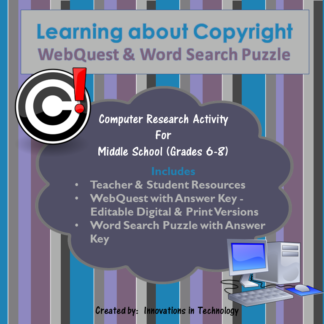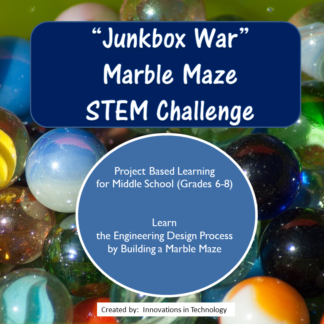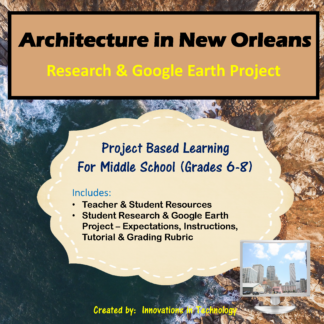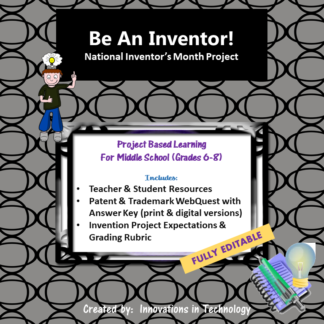Description
National Inventors Month is a month-long event in May celebrating creativity and invention and all the contributions that inventors have made throughout the world. There is also a National Inventors Day on February 11th (Thomas Edison’s birthday). This lesson is appropriate for either holiday, or just to use as a creative lesson to explore inventions and inventors.
In this lesson, students learn more about the thought process involved in creating an invention. They complete a webquest (Internet scavenger hunt) to learn about patents trademarks, and their importance to inventors. Finally, they write a paragraph explaining their invention, draw a model of it, and then design and create a prototype of their own invention out of paper. The prototype portion of the project can be adjusted for classrooms with access to other materials or 3D printers if the teacher prefers. Answer keys and grading rubrics are provided, as well as fully editable files for ease of modifications.
This lesson was designed for middle school students (grades 6-8) but could also be used for upper elementary students.
Materials Required:
• Computers with Internet access for each student (or pair of students)
• Software such as Microsoft Word or Google Docs
• Access to drawing software (such as Google Draw, Paint.net, SumoPaint, etc.) or
CAD software (such as Sketchup) – all optional
• Rulers, paper, tape and/or glue (for prototype)
• Other building materials or 3D printers (optional)
Files included:
• Teacher & Student Resources
• Patents & Trademarks WebQuest questions for students –
print and digital versions (editable)
• Patents & Trademarks WebQuest Answer Key (non-editable, .pdf)
• Invention Project Instructions, Student Expectations & Grading Rubric
Approximate Lesson Duration:
• Introduction to the Lesson: .5 – 1 (50 minute) class period
• Patents & Trademarks WebQuest: 1 – 2 (50 minute) class periods
• Invention Project: 1-5 (50 minute) class periods
• Project presentations and sharing with class (optional): Time required will be dependent on class size.
